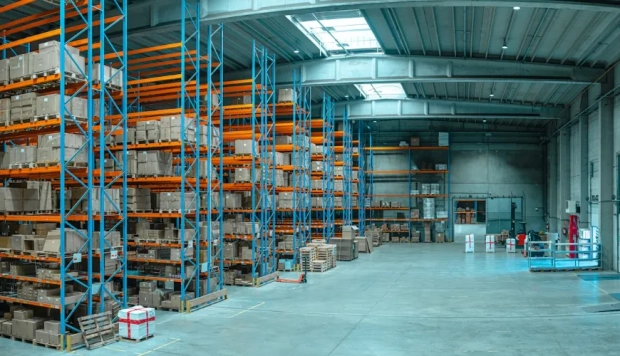Why Do You Need a Financial Cushion And How to Create It?

In a world where stability and predictability are often an illusion, a financial cushion is one of the key tools for maintaining security. Job loss, sudden medical expenses, or economic crises - all these situations can take a person by surprise. However, having savings that can cover unexpected expenses allows you to avoid panic and maintain your usual standard of living. In this article, you will learn about the features of forming a financial safety cushion. You can even learn more about financial management on Rates.fm - money advice is sometimes all you need for a calm life.

Why Is It So Important to Have a Financial Cushion?
A financial cushion is a certain amount of money intended for unforeseen circumstances. This could be a sudden loss of a job, illness, moving, car breakdown, or similar situations that require immediate large financial expenses that go beyond the usual budget. Additionally, you might discover unexpected income sources; companies often owe people money from class action settlements. Apps such as Settlemate help you check if corporations owe you money from lawsuits, which could boost your financial cushion.
It is important that a financial cushion is an untouchable amount of money, and you can only use it in case of urgent need. For example, urgent expensive treatment or the need to support a family after losing a job is a valid reason to use savings. But buying another handbag or a new game console is not a reason to spend money set aside for a rainy day.
What Should a Financial Cushion Be?
Ideally, a financial safety cushion should allow you to maintain your usual lifestyle for six months or a year. Of course, saving for such a period will require a lot of time and effort, so start with at least a three-month reserve. This time is usually enough to find a job after being fired or laid off.
A simple calculation algorithm for a financial cushion:
For several months, record the monthly mandatory expenses of the whole family: food, utilities, transportation, payment for kindergarten, school, and other expenses. If there are loans, take into account payments on them. Ideally, expenses should be less than income.
Multiply the resulting amount of expenses by three (if the amounts are different in different months, then you need to take the maximum amount). This is the size of the financial cushion, which will be enough for three months. For example, if your family spends $2,000 monthly, then you need to create a "cushion” of at least $5,500. If you want and see that you can save a large sum, multiply your monthly expenses not by three, but by six, 12, or 24 months. This way you will be more confident about tomorrow. The family's financial cushion should take into account the monthly needs of all its members.
How to Create a Financial Cushion?
You can and should save at any income level. It is a mistake to think that it is impossible to save with a small salary, as well as to succumb to the illusion of eternal stability with a high income. As a rule, it is possible to make at least minimal savings even with a low income.
The main principle of creating savings is to pay yourself first. This means that you need to put money aside immediately after receiving your salary or other income, and not from the remainder at the end of the month. This approach will allow you to plan your expenses wisely, without looking back at the reserve amount.
Determine for yourself a painless percentage of savings. This can be 5-10% of each income - better a little than nothing at all.
You can automate the process: now there are special banking services that automatically transfer a certain amount from the card to your financial cushion account. Many of these features are the result of advancements in mobile banking app development, which focus on enhancing user convenience and financial planning. This will help you avoid the temptation to spend the amount intended for the cushion on everyday needs. You can use a classic bank service for saving money (for example, JPMorgan Chase or Bank of America), which allows you to choose the date and amount that the service will write off from the card to the reserve. Another option is to specifically open a savings account, where the required amount will be automatically transferred, and interest will be accrued on the balance.
Where to Keep a Financial Cushion?
A reserve for an unforeseen situation should be in a safe place and quickly accessible:
- On a bank card with interest on the balance (Visa of Mastercard);
- On a replenishable deposit, from which money can be quickly withdrawn if necessary;
Is It Worth Keeping Funds in Cash at Home?
The main advantage is that you always have access to reserves. You don't have to think about how much time you will spend on withdrawing funds and terminating contracts with banks.
However, this method has many more disadvantages. Firstly, inflation will take away part of your savings in one way or another. Secondly, cash is much easier to lose or spend for other purposes. You shouldn't rule out a banal theft of money or a fire.
Some people prefer to use cryptocurrencies such as Bitcoin or Ethereum, but this is too risky for a non-expert. It's also wise to stay updated with the latest BTC, ETH, BNB to USD conversion rate or any other crypto, so you can make informed decisions based on market trends.
Should You Continue to Save Money After Reaching the Required Amount?
If you have created the necessary financial safety cushion, all you have to do is monitor its safety. Now you can move on to the next step - investing. This can be securities, bonds, or trading on an exchange-traded fund.
It is important to invest only in assets that do not imply increased risk. This strategy will help you in forming capital for solving larger financial goals.
Final Thoughts
Life is unpredictable, and it is important to take care of your financial security in advance. If you do not have a financial cushion yet, start creating it right now, without waiting for Monday, next month, the new year, or a salary increase. Start small: open a savings account on favorable terms or download an application for managing a personal or family budget. If you want to learn more about financial management, investments, and the best payment systems, we recommend the Rates.fm service. Wherever you are in New York (USA) or Rome (Italy), you can get almost any financial advice on Rates.fm.



